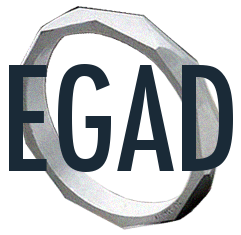CEAB Section 3.1 Requirements in Brief
![]() All of the associated documentation relevant for accreditation visits can be obtained through the CEAB web site. Â The expectations with respect to graduate attribute assessment are outlined in particular detail in the 2012 questionnaire, as opposed to the procedures guide, and reads as follows:
All of the associated documentation relevant for accreditation visits can be obtained through the CEAB web site. Â The expectations with respect to graduate attribute assessment are outlined in particular detail in the 2012 questionnaire, as opposed to the procedures guide, and reads as follows:
Criterion 3
![]() Engineering programs are expected to continually improve. There must be processes in place that demonstrate that program outcomes are being assessed in the context of the graduate attributes, and that the results are applied to the further development of the program. Â Summarize the continual improvement process.
Engineering programs are expected to continually improve. There must be processes in place that demonstrate that program outcomes are being assessed in the context of the graduate attributes, and that the results are applied to the further development of the program. Â Summarize the continual improvement process.
Criterion 3.1
![]()
-
Describe the processes that are being or are planned to be used to demonstrate that students possess the attributes required by criteria 3.1.1 to 3.1.12, and that the results are being applied to the further development of the program. The description should include:
- a set of indicators that describe specific abilities expected of students to demonstrate each attribute
- where attributes are developed and assessed within the program, such as via courses, co-curricular activities, co-op positions (e.g., a curriculum map). Ensure that courses described are easily identified in the course descriptions presented on the Course Information Sheets in Appendix 6C.
- how the indicators were or will be assessed. This could be based on assessment tools that include, but are not limited to, reports, oral presentations, observed laboratory performance, assignments, exams, standardized tests, student/alumni surveys, peer reviews, self-assessments, and work term experience/reports which may be used in whole or in part. For example, evidence may be demonstrated via a single question embedded on an exam or in the entirety of one or more of the assessment tools. Provide samples of work or other documents deemed to exceed, meet, and fall below the expected level of performance. How the samples of work or other documents are used to assess indicators should be clearly explained.
- evaluation of the data collected including analysis of student performance relative to program expectations
- discussion of how the results will be used to further develop the program
- a description of the ongoing process used by the program to assess and develop the program as described in (a)-(e) above.
- Programs should describe future plans for graduate attribute assessment in preparation for the next accreditation cycle when criterion 3.1 will form a basis for accreditation decisions. Also describe the assessment cycle if attributes will be assessed on a rolling basis. This is essentially the “long-term” process in Section 3.0.
The response to part A above must specifically address each graduate attribute in criteria 3.1.1 to 3.1.12.
Supplementary guidelines for criterion 3.1 – Definitions:
Graduate Attribute: generic characteristics, specified by the CEAB, expected to be exhibited by graduates of Canadian engineering schools
Indicator: descriptors of what students must do to be considered competent in the attribute; the measurable and pre-determined standards used to evaluate learning.
Illustrative example: Criterion 3.1.12 requires that students possess the attribute Lifelong Learning. A program might consider that the indicators required to demonstrate that students possess this attribute are:
- Critically evaluates procured information for authority, currency and objectivity.
- Describes professional and academic societies in the discipline and how new knowledge enters the discipline.
- Identifies resources and professional associations that address student’s own ongoing professional development
Assessment tool: sources of data on student learning.
Illustrative examples: design report, presentation, essay, examination, standardized exam, oral examination, observed behaviour, focus group, survey, etc.
Curriculum map: a plotted representation (often in the form of a table) that shows the relationship between learning experiences (e.g. courses, co-ops, co-curricular activities), instructional and assessment methods, and intended learning for each aspect of a given program so that the relationships and connections among all the elements are easily seen.
Illustrative Example: If a program identifies three indicators to demonstrate the graduate attribute Lifelong Learning, as described above, a table could be used to show which learning experiences (e.g. courses) are used to develop abilities and assess indicators
